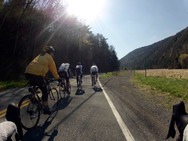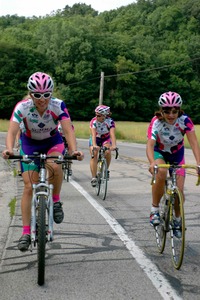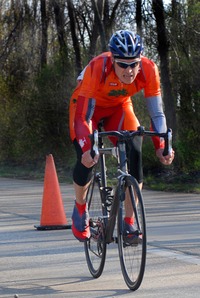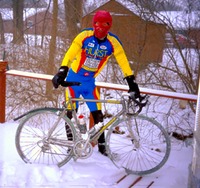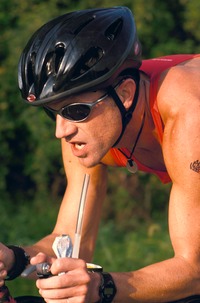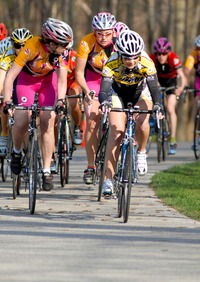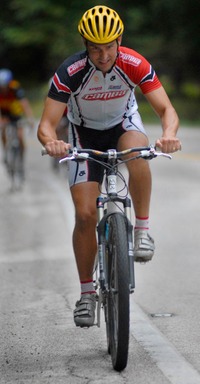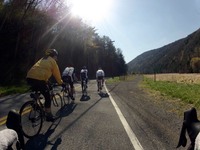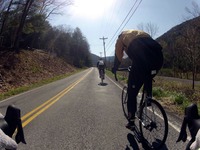I’ve been involved in cycling for the past 32 years, having participated as a Cat 2/3 road-racer, a triathlete, a mountain biker and an ultra-endurance cyclist. So I can assure you that that I have a rock solid background in a wide range of cycling-related disciplines. Over the past several years I’ve made it a point to keep abreast of the various options that we have available here in Northeastern Ohio with respect to winter bicycle training.
I can't help but notice that more and more of the indoor cycling classes are stressing a fitness-only curriculum , with lip service being paid to the technical aspects of becoming a safer and more proficient cyclist. Seems the masses want only to improve their VO2 and power output while steering clear of the nuts and bolts workouts that push them to become GOOD cyclists. And subsequently the instructors capitulate. Viola - we get the so called "killer workout" with no real sum or substance to becoming technically better! And what we end up with are truly horrible "bikers" on our roads and trails here in the Akron-Cleveland area. And I use the word "biker" appropriately - because "cyclists" know how to ride a bike safely properly, and efficiently!
In any off-season training regime, in any sport, the concentration of training should focus on becoming more technically sound, NOT just becoming more powerful and/or improving LAT. I often counter the fitness-only philosophy by asking this question: What good is there in crushing 300 watts of power at 90% VO2 when you pedal squares, can't hold a straight line and are incapable of riding in a pack safely? Becoming a proficient cyclist takes as much hard work and dedication as becoming a proficient swimmer...or a proficient runner...or proficient at any endurance sport for that matter. Getting technically proficient takes time. It's an investment that's even more important than your bank account. Because you can GET KILLED RIDING A BIKE!
Now I'm not saying all this as a prelude to declaring that my indoor class is the end all be all of cycling. That’s just not true! There is no quick and easy class that can encompass all the essentials needed to make you a better cyclist. Some classes will offer more, others will offer less, but none, not even my class can offer everything. Period! Any statement to the contrary is a sure sign that your instructor is merely trying to “pack” the class rather than “provide” the truth. Worse yet it could be a signal that the instructor actually "doesn't know that s/he doesn't know!" And believe it or not, this is quite prevalent now that everyone is trying to cash in on the "Indoor Cycling Experience".
Here’s the truth: If you want to become a better cyclist you need to look at your winter bicycle training from several different perspectives: form, technique and efficiency, power and/or Heart-rate training zones, safety, true climbing techniques, and how all of this fits into the scheme of a year-long training cycle – the Macrocycle. All of these components together can NOT – I repeat can NOT – be taught in one indoor class over the winter. You as the consumer have to realize this from the beginning, and you have to acknowledge that you will be doing some of these training modalities on your own outside of the class format, with or without the tutelage of an experienced coach.
In my 3-month series of stationary trainer classes I try to stress form, technique, efficiency and HR training zones. But obviously I am severely limited in my ability to teach my classes safety, true climbing techniques and power training. Let’s take each of these three usually misunderstood components separately.
#1) Safety entails the rider learning to make split second decisions and movements patterns on the bike that impact not only his/her own safety, but also the safety of those around them. This cannot be accomplished in an indoor setting - unless it’s a roller class! I encourage all of my cyclists to learn to ride rollers, whereupon they gradually acquire a very acute sense of balance on the bike. A well-balanced bike rider is a safer bike rider! And in my opinion safety supersedes heart rate and power training any day of the week. Learning to ride on rollers is something all of you should do. And for you multi-sport folks: get the hell off of the aero bars and really LEARN how to handle a regular drop bar set-up. The aero position is the LEAST stable handlebar position on a bike yet I see a gazillion "bikers" riding aero and aero only - and they weave aimlessly around on the road like a blind mole.
#2) True climbing techniques involve learning how to “swing” or move your bike horizontally as you’re climbing, especially when out of the saddle. That cannot be done when the bike is locked into a fixed position on any kind of rear-wheel trainer device – CompuTrainer included! You get zero horizontal movement. Now you can get stronger and better with your out of the saddle riding indoors, but the opp. to work on technique is very constrained. With that said, only so much can be gained in an indoor setting with respect to climbing practice? What’s more, unless your bike’s front wheel is elevated to where you are simulating a hill’s inclination, well in essence your are riding flats! This is a point that many instructors are totally oblivious to. So let me reiterate: If your inclination is zero…YOU ARE RIDING FLATS! I don't care what video, ERG, or race simulation you're doing, without front wheel elevation you're only fooling yourself into believing you're climbing.
#3) Power training allows you to measure the workload. And like heart-rate training it’s another parameter with which to measure your cycling efforts. Now over the years I’ve been working with more and more cyclists who have purchased power meters, and though they are not a prerequisite in my winter classes - just as HR monitors are not a prerequisite – they are highly recommended if you choose to take your training to a much more exacting level. Unfortunately the power meter is still on the pricy side, so usually there are only a handful of athletes in my classes who are utilizing the device and interpreting the results properly. Now with that said, the information you garnish from a power meter is only as good as the testing that was done to establish your zones. It’s the old adage: “Garbage in-Garbage out.” Determining power zones and calibrating power training devices is equally as exacting as determining heart-rate training zones. These zones, both power and HR must be correct to extract a beneficial and safe training effect on the athlete. Generic zones, improper calibration, and cookie-cutter zones can not only yield sub-standard training gains, but they can also be detrimental to an athlete’s health. In short, make sure your instructors are well qualified in working with power and HR zones.
Again, and I reiterate this: winter is the time where you need to work on the nuts and bolts of cycling, swimming and running - form, technique and cadence - not rep after rep of mind-numbing cardio intervals and race simulations. You've just spent the whole season training the cardio and racing...and you'll have all spring to get your cardio back up to par to race again. So be smart and take advantage of the winter for what it gives you a chance to do - train your neuromuscular system to perform the sports as efficiently as possible.
If you look around you'll see that ALL of the good riders and racers are doing a combination of these three things: riding outdoors on mt, X or road bike and/or riding fixies, riding rollers, and doing some form of indoor technique training on trainers or rollers. I totally understand that on a cold, crappy day the thought of doing a workout in your cycling shorts in a warm spin or Computrainer studio sounds great compared to the prospect of going outside. But again, I've always been telling people to emulate what the pros and elites do because that's what works - and what works is riding mt, X and fixie outdoors, and making sure to do tons of technique work on trainer and/or rollers.
One final thought on this, and I've discussed this with several "old timers" like myself, is the fact that nowadays it’s chic to do your workouts using all the fancy gadgetry - Computrainer, Johnny G spin bike, Cyclops Spin bike, Tour De France spin bike – where you kind of get this "sensory "titillation". What’s more they provide you with a much more palatable venue when compared to the prospect of doing cold road/fixie rides outdoors, dangerous roller sessions, and mind-numbing indoor technique stuff of the trainer. But honestly the old school stuff is still just as relevant today as it was 40 yrs ago..because it works!! I've got about 50 clients who will vouch for that.
I hope I've provided you a bit more information with which to make your indoor training choice this winter season, and I want to thank you for considering my classes and services...Pete Gladden
